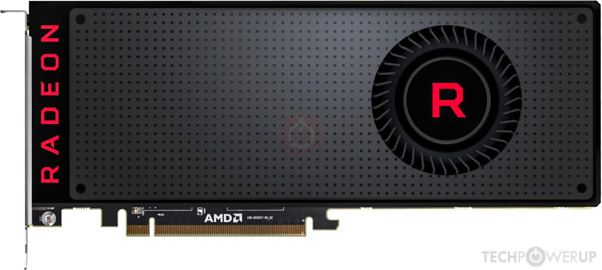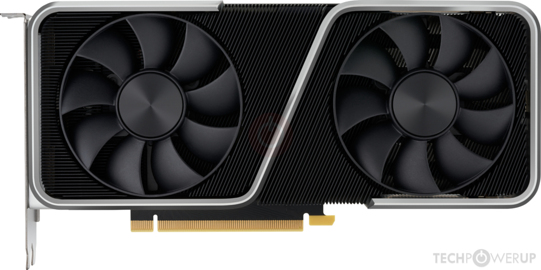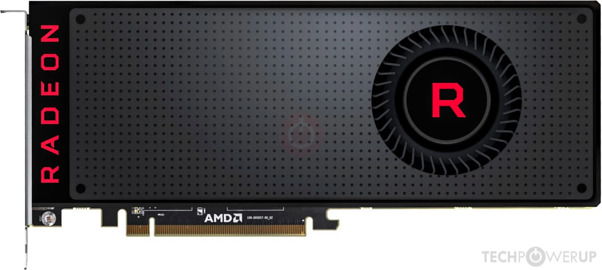ReddDreadtheLead
#TeamLate2025WithAPotentialForEarly2026
- Pronouns
- He/Him
For XBS they confirmed it’s 2 threads or “one core” so to speak for the OS tasks.
Unfortunately, the techpowerup numbers are useless.I’m not sure if that’s an apt comparison, the 28SM 3060 outperforms the Vega 64 with 64 CUs by 20% as per TechPowerUP. While also having less memory bandwidth. And roughy the same TFLOP count.

AMD Radeon RX Vega 64 Specs
AMD Vega 10, 1546 MHz, 4096 Cores, 256 TMUs, 64 ROPs, 8192 MB HBM2, 945 MHz, 2048 bitwww.techpowerup.com

NVIDIA GeForce RTX 3060 12 GB Specs
NVIDIA GA106, 1777 MHz, 3584 Cores, 112 TMUs, 48 ROPs, 12288 MB GDDR6, 1875 MHz, 192 bitwww.techpowerup.com
If we were to normalize it, CU to SM, 2.28:1 ratio just using that kind of metric.
Add the 20% when at equal TFLOPs, and you get that an SM performs like 2.736 CUs of GCN5.0 who uses rapid packed math.
Or let’s compare the RX Vega 56 to the 3060 mobile.
56CUs vs 30SMs, both around 10TF (latter is a bit higher), the 3060 mobile outperforms that by 11%
So the performance would be 2.07CU:1SM in this case. Without accounting for the TF, 1.866CU:1SM to have roughly similar performance.

AMD Radeon RX Vega 56 Specs
AMD Vega 10, 1471 MHz, 3584 Cores, 224 TMUs, 64 ROPs, 8192 MB HBM2, 800 MHz, 2048 bitwww.techpowerup.com

NVIDIA GeForce RTX 3060 Mobile Specs
NVIDIA GA106, 1425 MHz, 3840 Cores, 120 TMUs, 48 ROPs, 6144 MB GDDR6, 1750 MHz, 192 bitwww.techpowerup.com
I'm perfectly willing to believe that my numbers underestimate Ampere and Drake. I would love to have more data.So I’m not really sure using CUs and SMs is really a good idea in this case, or Drake would be >20% the PS4.
They do not. AMD APUs don’t do that.
Yes, I agree on all countsThat is only if Drake doesn’t exceed 1.043GHz. After that it has worse memory bandwidth allocation per TF than the desktop Ampere.
Basically, why I said before about the ceiling for Drake with respect to TF is 3.2, after that it doesn’t scale in the favor and you get a more imbalanced system like the Tegra X1.
And also why I think that with the GPU clocking to half in portable mode, a bandwidth of 68.2GB/s is “preferred” to balance the scaling from portable to Dock as best as possible. If they used LPDDR5X it can make it easier, being 2x the bandwidth scaling with 2x the FP32 increase.
Do you mean the Scaleable Data Fabric? TMK, it’s a branded interconnect IP that allows for the GPU and CPU to communicate without requiring PCIe lanes for that like on PC. It also allows the two CCX in the PS5 and XBox Series to communicate with one another, something that they wouldn’t be able to do otherwise incurring a performance penalty.My understanding was the Infinity Fabric 3.0 introduced cache coherence between GPU and CPU via a shared L3 cache - that's certainly what the AMD reps said when they tried to sell it to me. My understanding is also that the PS5 was confirmed to have this via die shots which matched the AMD patent application. But I admit that this is not my area of expertise.

 forums.developer.nvidia.com
forums.developer.nvidia.com
So, in some places I've seen some comments around a video yesterday from SuperMetalDave64 offering some kind of indication/confirmation of a next gen device. I don't think that it's the case, so let me summarize the content of the video for you:
— Retro Studios hired a VFX artist with an impressive portfolio (who has previously worked on the game Remnant: From the Ashes).
— Another LinkedIn finding of UI Technical Designer at Retro Studios showed that they are developing Metroid Prime 4 through an in-house engine.
That's all. I guess it bodes well for MP4, but obviously there's no linking to any new hardware development. In case you want to see the video, you have it here:
Started doubting myself when I remembered they did two episodes about boycotting a week apart. It is more Pokemon. But apparently they got the "REAL answer" lolThey went through all that two weeks ago. There won't be anything Switch Pro related (apart from the repetitive questions at the end).
Started doubting myself when I remembered they did two episodes about boycotting a week apart. It is more Pokemon. But apparently they got the "REAL answer" lol
Maybe the false narrative that Pokemon looks how it does because of the Switch hardware.
They went through all that two weeks ago. There won't be anything Switch Pro related (apart from the repetitive questions at the end).
So, in some places I've seen some comments around a video yesterday from SuperMetalDave64 offering some kind of indication/confirmation of a next gen device. I don't think that it's the case, so let me summarize the content of the video for you:
— Retro Studios hired a VFX artist with an impressive portfolio (who has previously worked on the game Remnant: From the Ashes).
— Another LinkedIn finding of UI Technical Designer at Retro Studios showed that they are developing Metroid Prime 4 through an in-house engine.
That's all. I guess it bodes well for MP4, but obviously there's no linking to any new hardware development. In case you want to see the video, you have it here:
It's especially bad this time because everyone and their mother knows that AAA (or even AA) open world games specifically will undergo delays. It's a fact of life. No matter what you set as the release date it will be delayed.So again it boils down to Game Freak setting too early a release date, not accounting for delays, and then with the merchandising machine in action they're stuck with the release date they set three years ago.
I mean I appreciate the enlightening of how GameFreak, Creatures, Nintendo and TPCi work together, but all I can do is sigh and shake my head yet again at how this franchise currently managed is despite a rabid fanbase that will throw all their money at it regardless of game performance (kinda like Toronto Maple Leafs fans)
The next Switch after Drake will be 1000 teraflops.
Fortunately, we are quite helped in this matter but Richard Leadbetter, who did a like-for-like comparison across AMD generations, for exactly the same reason we want to here - to spec out an unreleased consoleI’ll also see to compare GCN 2 to 5.0, finer is what the consoles were based on…. a weird amalgamation that is.
This is why Nintendo haven’t announced a 3D Mario game to go with the opening of the movie or the theme park.So again it boils down to Game Freak setting too early a release date, not accounting for delays, and then with the merchandising machine in action they're stuck with the release date they set three years ago.
It has less shaders than Drake.Similarly, we can use the RDNA2 numbers for comparing to current gen. 1.35x means that Drake does remarkable well relative to Series S for being a portable console, but the series S’s higher clocks and shader numbers still leave it in a different league. The larger 1.6x ratio makes that gap much smaller, but the Series S still has the edge, and in the faster CPU comes along for the ride.
Anyway…. @oldpuck is this video good enough for your curiosity on GCN5.0 vs Ampere?
Yes, I misspoke, I meant to refer to CUs. The additional shaders per SM to RDNAs CU is a significant of why Ampere gets ahead.It has less shaders than Drake.
1536 vs 1280.
So again it boils down to Game Freak setting too early a release date, not accounting for delays, and then with the merchandising machine in action they're stuck with the release date they set three years ago.
I mean I appreciate the enlightening of how GameFreak, Creatures, Nintendo and TPCi work together, but all I can do is sigh and shake my head yet again at how this franchise currently managed is despite a rabid fanbase that will throw all their money at it regardless of game performance (kinda like Toronto Maple Leafs fans)
To be fair, it should be noted though the DirectX 12 is on PC and the newer cards are better at it than the older cards. And all the while NVN2 will be lower level and targeting a single platform, not more general to multiple platforms (though DX12 is low level as is, just not console level afaik). GCN 1.0 GPUs are less suited for DX12U than say… GCN5.0 or even RDNA based GPUs. OrYeah, this is useful data, as is DF's head to heads between Vega64 and the R9 Fury X. Specifically, it says that GCN5 was godawful. The the Vega64 card barely inches about the R9 Fury X despite having 1.5x the clock speed. This trends across anything you can normalize to, Vega 64 performance plummets relative to its predecessors and obviously its successors. The 3060s vast over-performance relative to compute units is matched by other AMD GPUs.
Ampere performs 2.5x better than Vega, if we divide by per compute unit. And Vega is outperformed by GCN3 by like 25%. If we use Vega to guess at Ampere's efficiency over GCN3, we get 2x, which is suspiciously close to my 1.8x.
But GCN3 never shipped in a console, nor did GCN5, it's only use in this kind of comparison would be to use it as a stepping stone chip in the absence of other data. With the existing GCN1:GCN4:RDNA1 numbers, the RDNA1:RDNA2 numbers, and the RDNA2:Ampere numbers, as long as that daisy chain is, it seems much more reliable than using Vega in any way.
I'm not saying my analysis is perfect by any means, but the Vega data seems consistent with it
Yes, I misspoke, I meant to refer to CUs. The additional shaders per SM to RDNAs CU is a significant of why Ampere gets ahead.
One thing I'd like to note about that is:To be fair, it should be noted though the DirectX 12 is on PC and the newer cards are better at it than the older cards. And all the while NVN2 will be lower level and targeting a single platform, not more general to multiple platforms (though DX12 is low level as is, just not console level afaik). GCN 1.0 GPUs are less suited for DX12U than say… GCN5.0 or even RDNA based GPUs. Or
At that point you have to basically just wonder how good is Nvidia‘s implementation of the NVN2.0 API for Drake versus Sony‘s GNM API for the PlayStation 4 that developers can squeeze the most out of it. So the comparisons will really just come down to who can actually do the job better in the long term between the two platforms. Who does the better job in the long run? You know what I mean?
In reality, I do think that Drake in portable mode is what would be comparable to the Xbox one/PlayStation 4 consoles however, and if it was around between the PS4 and XBox One in TF number (ex:1.5-1.6TF) it should be better at handling the task than the PS4 aka more efficient at doing the same job, while also targeting a lower resolution because of the screen.
That is assuming it is a 720p display and I’m going to assume it is until I see it otherwise noted that it’s going to be a higher resolution display. For docked mode, it’s gonna be a completely different Scenario entirely. and it would be able to compare to the PS4 Pro despite being lower by virtue of being more efficient. (Not accounting anything DLSS to clean up the image)
It’s really difficult to do proper comparison of architectures across very different hardwares, and we just have to wait and see how that pans out.
I will say this, however:
1) these consoles lack the infinity cache and therefore they do not get a 25% performance uplift from the infinity cache in terms of raster performance.
2) they cannot access the CPU cache, and they cannot act as a pseudo-infinity cache, They simply fetch out to the VRAM and that’s pretty much it, they do have an infinity fabric and it does connect the entire soc elements to one another so it can communicate better but that’s about it.
3) the ram situation in these consoles is very interesting, and should be studied. Because they are RDNA-based they are less efficient with memory, and they are less efficient with memory bandwidth. Mind you RDNA is better than the GCN-based architecture but it is not that great. Still good, but not excellent. Nvidia products have been able to manage more with less, or rather do about the same with less resources
4) the PS5 doesn’t have the full RDNA2 implementation, it has a few features but not all of them. The most noteworthy feature in RDNA2 besides the large L3 is the Ray Tracing, but the PS5 only has that in terms of features. The other feature that is more of an efficiency thing is that it is able to clock higher. Doesn’t have hardware based VRS, doesn’t have mesh shaders and uses a legacy geometry path that is the same as the PS4 Pro (that’s how you got BC!), doesn’t have sampler feedback, doesn’t have the “AI acceleration hardware” this is a meme to me because the series doesn’t have it either.
The Series may have the “full” RDNA2 implementation (more like 1.6-1.8), however from the current looks of it devs aren’t keen on using it and prefer to use their own software solution (VRS for example with CoD).
It remains unclear how much better AMpere and Turing are with the same features, or how much worse. Both have mesh shaders but again hard to say which does it better and if it’s even enough for devs to rely on that, it makes the development process much easier.
But in any case will the PS5 not having the full implementation matter in the long term? That remains to be seen, they’ll just fallback on a software solution that emulates it and the PS5 is plenty powerful. It is also the target platform therefore it doesn’t lose out, the others having more that can do it reasonably well doesn’t mean it’ll get fully used. It’ll just exist and probably be underutilized.
Some of the features that aren’t there Sony simply offered their own hardware based solution elsewhere. Fast SSD isn’t for fun, well it is but really they don’t use DX12U, they found their own implementation that is a work around that. It’s a blistering fast SSD.
6) the GDDR. Funnily enough with the GDDR memory, it has a much higher latency than DDR, and LPDDR memory has a higher latency than DDR, but is significantly lower than GDDR memory when it comes to latency. It’s between DDR and GDDR but it is closer to the former than the latter, and the higher the latency the more negatively it affects game performance (mainly the CPU). And speaking of, x86_64 should have a higher memory bandwidth requirement than the ARM-based SOCs. I remember Thraktor using a 3700X as a point of comparison in the speculation before, and that has 23.84GB/s for bandwidth with a max of 47.68GB/s. but it’s a UMA so it’s hard to say how much it really matters. We will see with the games.
Or maybe the 4700U which is the closest to the consoles listed here, has a single channel up to 17.07GB/s but a quad channel up to 68.28GB/s
There’s more but I’m blanking at the moment on how to properly articulate it.
But to get the idea of all of what I want to say, drake is such an enigma with respect to what it can actually do, and how it would actually perform that all of the speculation could be so right on the money, and we’re getting exactly what we’re saying, or we are greatly overestimating it that it is so bad that it makes the PS4 look like a technical marvel through some way or form that I can’t quantify. Or we are greatly underestimating Drake, and how it will be implemented into the next Nintendo system, that it actually performs better, and I mean noticeably better than what we are giving a credit for. Maybe it’ll be 40-50% better than what we are implying even with numbers/ giving it credit for, but in actual real world practice.
Henceforth, my lowest expectation is XB1/PS4 in portable mode. There’s only a 30% difference between these two.
Short: totally agree.[snip a lot of smart stuff]
Henceforth, my lowest expectation is XB1/PS4 in portable mode. There’s only a 30% difference between these two.
So, in some places I've seen some comments around a video yesterday from SuperMetalDave64 offering some kind of indication/confirmation of a next gen device. I don't think that it's the case, so let me summarize the content of the video for you:
— Retro Studios hired a VFX artist with an impressive portfolio (who has previously worked on the game Remnant: From the Ashes).
— Another LinkedIn finding of UI Technical Designer at Retro Studios showed that they are developing Metroid Prime 4 through an in-house engine.
That's all. I guess it bodes well for MP4, but obviously there's no linking to any new hardware development. In case you want to see the video, you have it here:
I only want 520.8333MHz portable and 1,041.6667MHz docked… with the CPU at 2.13GHz if at 5nm….Short: totally agree.
The reason that I did this analysis was to set a confident floor. We can be confident that Ampere is outpacing RDNA* by a generational margin. Are there subtleties? Yes. Are there ranges in which it could operate? Of course. But if you're accounting for native resolution, XB1/PS4 level power is basically a slam dunk, and PS4 Pro power is sorta past the optimistic line - but DLSS means that line means something totally different. Once you get enough of a gap for DLSS additional power can go to actual in game features, where the Pro consoles were totally obligated to spend it on jacking up internal res for checkerboarding.
At that point it's really about Nintendo balancing how much power they want for their first party games, versus battery life. I feel pretty good that ~400 is a comfortable perf range, and very close to the best battery life, and anything in the 800Mhz in handheld mode is going to make docked mode perfectly scalable. It's a very good place to be.
How compromised Series S is on the memory front, and how compromised the RDNA implementation is in current gen is just more room for impossible ports.
I have a dumb fan theory that Nintendo will land on 852 Mhz/1.7Ghz for the gpu/cpu clocks, just because with 12SMs and octo core, it would (on paper) look exactly like a Xbone but in portable, which just amuses me to now end.
Nopotentially amusing question for some, would this machine likely outperform my gtx 1080?
lol, that's about what I expected
In some scenarios with DLSS involved, absolutely.lol, that's about what I expected
it'll really be about native nintendo games for me
Just curious, are there any mobile SoC able to beat a GTX 1080? I like how this GPU from 2016 still hold up today.
Maybe new Switch Pro infos?
All Pro related stuff I have needs a great deal of confirmation before I can even begin to consider reporting it. As said earlier this year, I need strong confirmation if I am to report/talk on what I have because the info is heavy.
All Pro related stuff I have needs a great deal of confirmation before I can even begin to consider reporting it. As said earlier this year, I need strong confirmation if I am to report/talk on what I have because the info is heavy.
He just said he needed confirmation, which means either we hear about it eventually or the info is false.Are you able to say if you are leaning toward the news being positive or negative? It's fine if you can't say.
All Pro related stuff I have needs a great deal of confirmation before I can even begin to consider reporting it. As said earlier this year, I need strong confirmation if I am to report/talk on what I have because the info is heavy.
All Pro related stuff I have needs a great deal of confirmation before I can even begin to consider reporting it. As said earlier this year, I need strong confirmation if I am to report/talk on what I have because the info is heavy.

No. This gpu was way out there in power at the time. Mobile socs are, at best, at the level of a 1050Ti.Just curious, are there any mobile SoC able to beat a GTX 1080? I like how this GPU from 2016 still hold up today.
Did they ever do any meaningful announcement/reveal during the Game Awards?Now is the time for optimism! A reveal around the Game Awards is still possible! Don't let your dreams be memes! Meme your dreams!
#SwitchSweep
#Switch2in2022
But seriously, as absurd as some would expect it to be, I could see a Game Awards announcement. If it happens I'd expect it to be more akin to the original announcement for Nintendo Switch, tease its capabilities, shtum on what games are coming out and when, no pricing, just a release window.
If it doesn't happen, well, sue me!
Series X reveal is the big one that comes to mindDid they ever do any meaningful announcement/reveal during the Game Awards?
I mean, at all, not just Nintendo
I had a laptop with a GTX 1070 at 8GB VRAM. Could it outperform that in terms of the GPU? Not sure how powerful the mobile version of 1070 would be.
Of course. It’s a laptop after all. 1070 to Drake that is, it can outperform it.I had a laptop with a GTX 1070 at 8GB VRAM. Could it outperform that in terms of the GPU? Not sure how powerful the mobile version of 1070 would be.
I see.Of course. It’s a laptop after all. 1070 to Drake that is, it can outperform it.
That sounds negative.All Pro related stuff I have needs a great deal of confirmation before I can even begin to consider reporting it. As said earlier this year, I need strong confirmation if I am to report/talk on what I have because the info is heavy.
yeahhh for now I'm gonna assume this got cancelled or significantly delayedThat sounds negative.
I might misunderstand but there is no way Drake can outperform a 1070 in a laptop, lol. It would be amazing if it outperformed a 750 Ti already.Of course. It’s a laptop after all. 1070 to Drake that is, it can outperform it.
